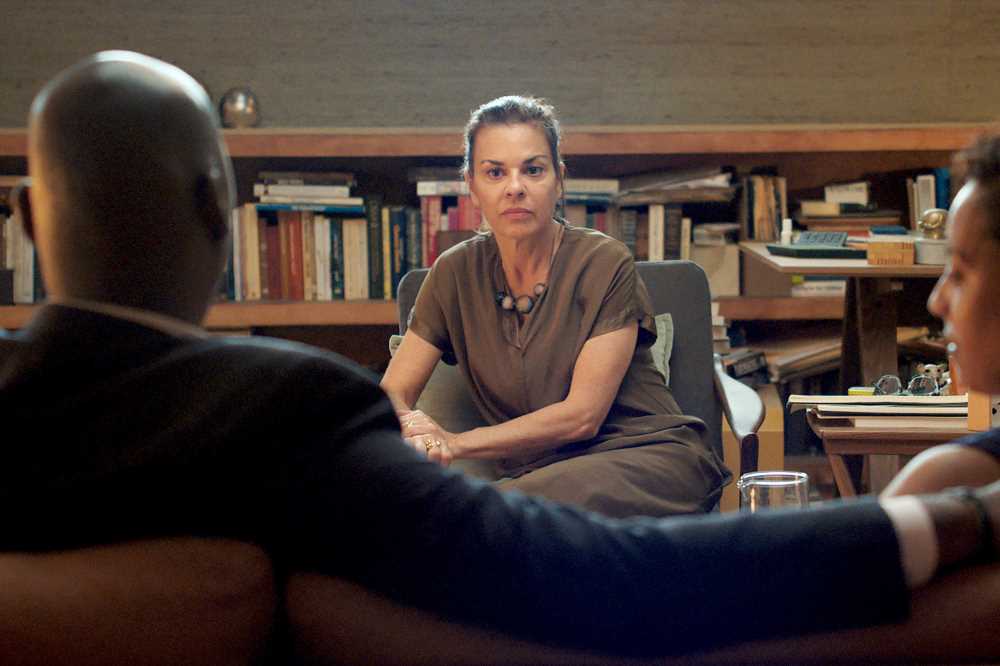Ever wanted to be a fly on the wall during a couples’ therapy session?
Showtime’s new docuseries “Couples Therapy” lets viewers do just that.
The show follows four married pairs over six months as they tackle their specific issues with Soho-based clinical psychologist and psychoanalyst Orna Guralnik.
“When you’re working with any of these couples, you’re always thinking on a few different layers,” Guralnik, 55, tells The Post. “One is the immediate dynamic between the couple. The other [is] what they’re bringing in from their previous history.”
And then there’s the pressure from the outside world — what Guralnik calls the “sociocultural dimensions” that affect every relationship.
Here, she breaks down the problems presented by each pair, and shows how they solved them.
Constant bickering
Annie and Mau, married for 23 years, were always fighting. That would seem to be their biggest obstacle, but Guralnik didn’t buy it.
“People think they’re arguing to resolve something, but they’re actually arguing in a way that keeps them from negotiating what’s actually at the heart of the problem,” the therapist says. “So the argument is like a distraction from the real issue. They’re afraid of revealing what’s really at stake for them.”
For this couple, that deeper problem was a struggle with incompatibility — with sex, communication, even what they wanted from the birthday parties that they gave each other.
Compatible or not, Guralnik says the key to a couple defusing a fight is to make sure that each partner believes that he or she is being listened to and understood.
“When you know someone will actually make a true effort to understand you,” she says, “you can relax a bit and relax the ferociousness of your need to argue.”
As for the partner doing the listening: You don’t have to agree with what the other is saying, but you have to try to understand what it is they’re actually saying, and why they’re upset.
“When people learn to listen in that way,” Guralnik says, “the level of conflict just goes down dramatically.”
Trapped by the past
“We no longer speak the same language,” Elaine says of DeSean, her husband of 11 years.
Much to their surprise, they learned that their pasts were preventing them from living in the present. Both Elaine and DeSean had had a traumatic experience before they came together. While the show doesn’t dive into DeSean’s past, Elaine had been in a physically abusive relationship before. “Trauma can hijack each person’s perspective and color the way they experience their partner now,” Guralnik says. “We all bring our history in relationships, and sometimes it’s fine . . . and sometimes it can haunt and distort.”
Guralnik urges partners to “self-reflect” by noting what feelings they’re having, and when they last had them: “Oh, I know these feelings — this is the way I felt when I was 12.”
Elaine’s aha moment came when she described being ignored as “a punch to the face,” a reference to her prior trauma.
These feeling flashbacks, Guralnik says, indicate that there’s something deeper going on than what the two of you are facing that immediate moment.
In these situations, your partner can be helpful, the therapist says, by pulling you back into the present, and letting you know that this experience is different.
Suspicious minds
Evelyn was always hounding Alan about his whereabouts. In response, her husband of six years would pull away and become furtive, causing Evelyn to want to probe more.
“With them you see a pretty typical couples’ dynamic,” Guralnik says. “The more one withdraws and conceals, the more the other has to go after [them] and develop mistrust and suspicion.”
To stop this endless “dance,” start checking your own behavior, the therapist says: Instead of wishing your partner would change, change the way you do things, and figure out a way to let go of your expectations.
For Evelyn, this was finding a way to stop giving Alan the third degree, no matter how much she wanted to. Meanwhile, Alan tried to be more upfront with his wife.
“You can change yourself,” Guralnik says. “You have an enormous amount of control over how you behave in a couples’ dynamic.”
Being a queer couple in a straight world
Lauren, a trans woman, and her wife, Sarah, were struggling to figure out what roles each one played in their marriage of two years.
“They are a queer couple that are functioning within a pretty heteronormative society,” says Guralnik. “So, in a way, they have to reinvent everything and figure it out for themselves. They can’t rely on any habitual pattern and trust it.”
For this 30-something pair, that included negotiating everything from who pays the bills to who’s getting up in the morning to make the coffee, issues that came to a tipping point when they decided to try to have a baby.
Guralnik calls such negotiations an “ongoing task of queer relationships,” one that, if not handled well, can create tension and strife. Couples should grant themselves compassion “for the extra layer of effort” they have to put in, she says.
“It’s also a beautiful thing,” Guralnik says, “because you get to think about things that other couples may not get to think about and just blindly repeat.”
Source: Read Full Article




